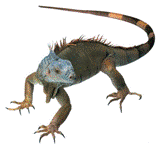Papers in the Biological Sciences

Papers in Herpetology
Document Type
Article
Date of this Version
6-1981
Citation
Prairie Naturalist (June 1981) 13(2): 33-41.
Abstract
Introduction: Studies of reptiles and amphibians in the grasslands of North America have primarily concerned the compilation of state faunal lists (e.g. Smith 1956, Hudson 1942, Webb 1970, Wheeler and Wheeler 1966). There have been a large number of reports on range extensions to augment this basic data. With the exception of the extensive studies by Fitch (1954, 1956, 1958, 1960, 1963) primarily on reptiles and Bragg (1940a, 1940b, 1943, 1953) primarily on anurans, the ecology of the herpetiles of the grasslands are not well studied. Lynch (1978) provided an excellent analysis of the ecological distributions of the leopard frogs in Nebraska. Werth (1972) presented preliminary observations on the competition of lizards. Other recent studies have concerned the ecology of herpetiles of specific sites (Platt 1973, 1975, Ballinger et al. 1979, Jones and Droge 1980). Our future understmding of the ecology of the prairie will depend largely on detailed studies of these and comparably preserved sites because of the extensive fragmentation of the central grasslands by agricultural practices. The purposes of the present study were to determine the herpetofaunal composition of a newly. created nature preserve in south central Nebraska, and to outline the general natural history of the species present.
Summary:
A total of ten herpetiles were reported for the Mormon Island Preserve. Each of the ten species occurring on the preserve is associated at least to some degree with aquatic habitats or riparian woodlands. The grazing and agricultural practices currently carried out at Mormon Island have apparently restricted the herpetofauna to those habitats. Herpetiles requiring large, permanent bodies of water and those burrowing species which prefer areas characterized by low water tables as well as highly terrestrial herpetiles are conspicuously absent from the Mormon Island Preserve.


Comments
Copyright 1981, North Dakota Natural Science Society. Used by permission.